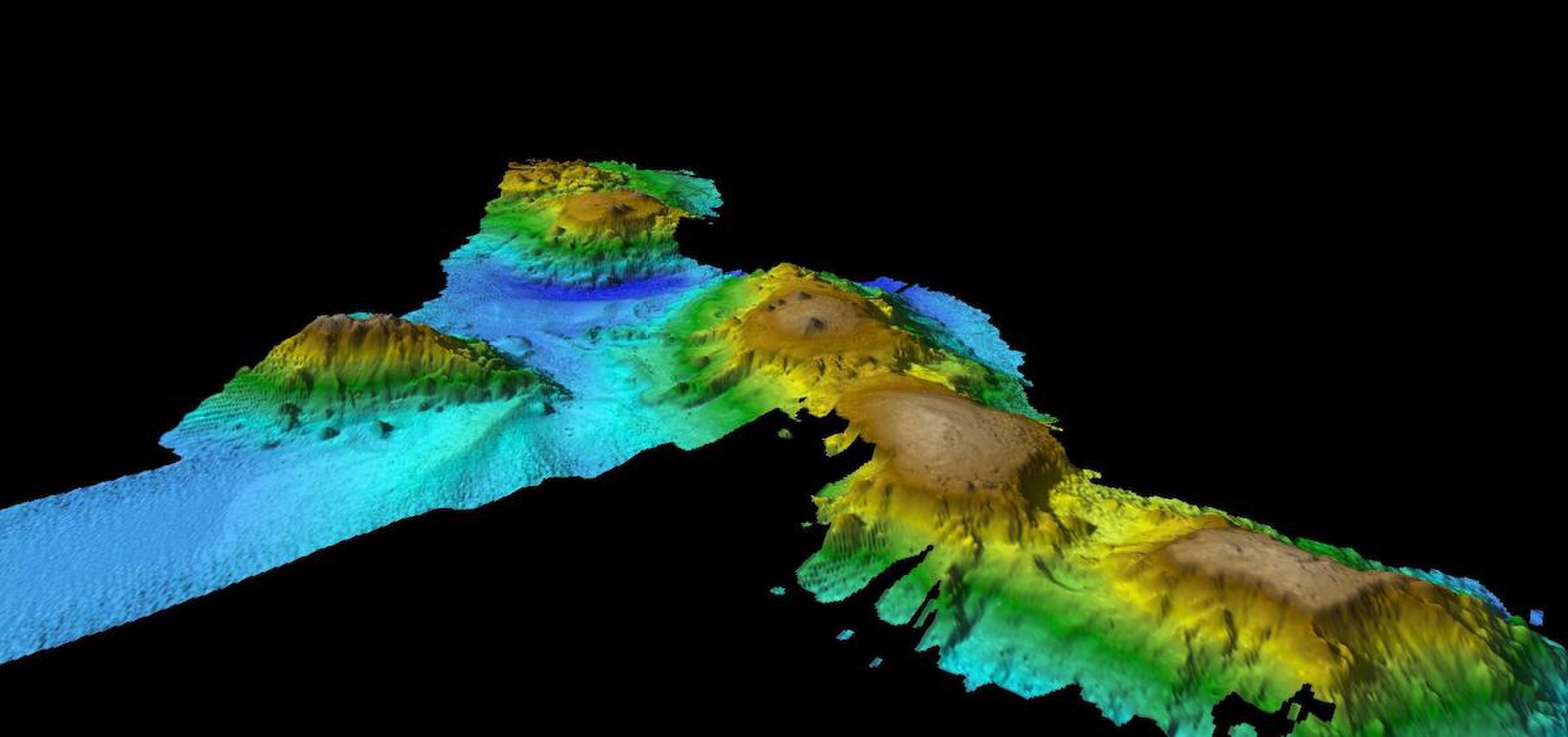Scientists have created a detailed seafloor map that reveals a mysterious underwater volcanic world off the coasts of Tasmania. The never-before-seen underwater world is home to diverse species of sea creatures.
Experts from the Commonwealth Scientific and Industrial Research Organization (CSIRO) made the discovery when an investigator tried to map the seafloor 249 miles east of the Tasmanian coast. Scientists from the Australian National University conducted the research on the discovery. They spotted a chain of “seamounts,” or mountains deep in the ocean. This provided the first mesmerizing view of the mysterious underwater volcanic world.
“Our multibeam mapping has revealed in vibrant detail, for the first time, a chain of volcanic seamounts rising up from an abyssal plain about 5000m [16,404 feet] deep,” Dr. Tara Martin of CSIRO said in a statement. “The seamounts vary in size and shape, with some having sharp peaks while others have wide flat plateaus, dotted with small conical hills that would have been formed by ancient volcanic activity.”
The newly-discovered area is full of marine life which have made their home in the underwater volcanic world. Scientists onboard the research vessel were able to study seabirds and marine life in the area.
“While we were over the chain of seamounts, the ship was visited by large numbers of humpback and long-finned pilot whales,” Dr. Eric Woehler of BirdLife Tasmania said in a statement. “We estimated that at least 28 individual humpback whales visited us on one day, followed by a pod of 60-80 long-finned pilot whales the next. We also saw large numbers of seabirds in the area including four species of albatross and four species of petrel.”
The team believes the seamounts are the perfect rest area for some animals migrating from one part of the ocean to another. This particularly applies to whale, which could use this area to navigate through the ocean.
“These seamounts may act as an important signpost on an underwater migratory highway for the humpback whales we saw moving from their winter breeding to summer feeding grounds,” Woehler said.
Scientists are optimistic about additional research and surveys of the area, which will be conducted during research trips scheduled for November and December.
“We expect that these seamounts will be a biological hotspot year round, and the summer visit will give us another opportunity to uncover the mysteries of the marine life they support,” Woehler said.
This is the latest scientific project attempting to shed light on the depth of the oceans. In 2013, scientists conducted a separate study which examined the sediment on the seafloor off the coast of Peru. At the time, scientists found a great variety of microbes thriving on the ocean floor.





